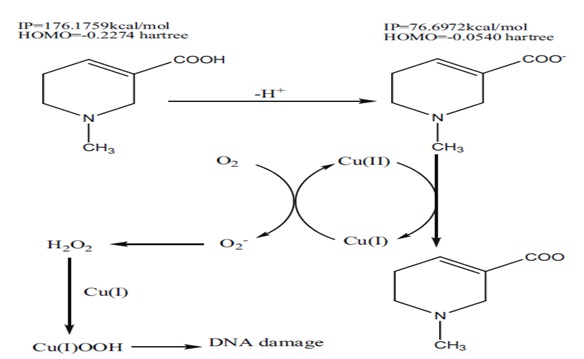博文
Mechanism of DNA damage induced by arecaidine: The role of C
||
Betel quid chewing is a widely prevalent habit correlated with a high incidence of oral cancer. However,
the underlying mechanism of the carcinogenicity of betel quid chewing is poorly understood. In the present
study, the carcinogenic mechanism of action of betel quid chewing was examined by determining
DNA damage induced by arecaidine and Cu(II). It was found that arecaidine alone had no significant effect
on inducing DNA damage, but it caused significant DNA double stand breaks in the presence of Cu(II) ions
under alkaline conditions. Further studies showed that reactive oxygen species were generated and Cu(I)
was formed in the reaction. The arecaidine anion exhibited a lower IP and a higher HOMO energy than
arecaidine itself, suggesting an increased ability to donate electrons under alkaline pH conditions. These
results suggest that the presence of Cu(II) and alkaline conditions are two essential factors in arecaidineinduced
DNA damage, a contributing factor to oral cancer occurrence.

https://blog.sciencenet.cn/blog-280781-619671.html
上一篇:Research on the chelation between quercetin and Cr(III) ion
下一篇:Protective effect of areca inflorescence extract on hydrogen